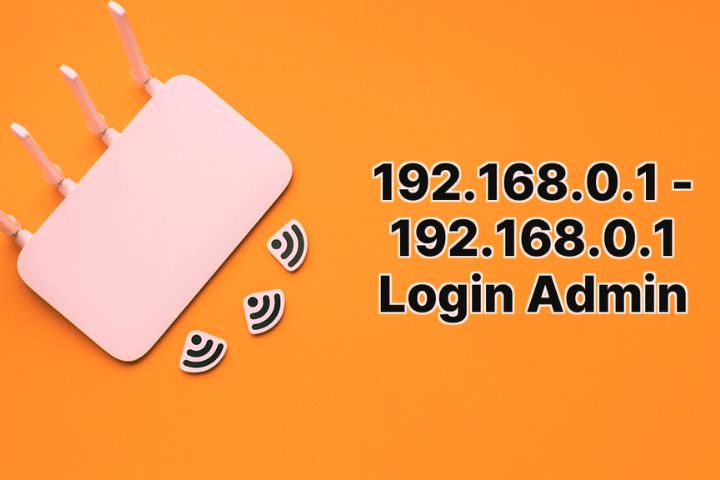Understanding 192.168.0.1 And Default Router Login Credentials

192.168.0.1: In the vast realm of networking, IP addresses play a pivotal role in connecting devices and facilitating communication. One such IP address that holds significant importance in the world of routers is 192.168.0.1. This numerical combination serves as a gateway, providing access to the router’s settings and configurations. In this article, we’ll delve into the depths of 192.168.0.1, exploring its purpose, functionalities, and the default login credentials that are associated with it.
Table of Contents
Understanding 192.168.0.1
192.168.0.1 is a private IP address commonly used as the default gateway for many routers. It belongs to the range of addresses defined by the Internet Assigned Numbers Authority (IANA) for private networks, which means it is not routable on the public internet. This specific address is part of the IPv4 addressing scheme, which is the fourth version of the Internet Protocol.
Routers utilize 192.168.0.1 as the access point to their web-based management interfaces. Through this gateway, users can configure various settings, such as network security, port forwarding, and Quality of Service (QoS). Accessing these settings is crucial for optimizing network performance, ensuring security, and customizing the router according to specific needs.
Default Router Login Credentials
To access the router settings through 192.168.0.1, users are required to log in. By default, routers come with predefined login credentials that grant access to the administrator’s dashboard. While these default credentials are convenient for initial setup, it’s crucial for users to change them to enhance security.
Common default login credentials for routers using 192.168.0.1 include:
- Username: admin Password: admin
- Username: admin Password: password
- Username: admin Password: (blank)
It’s important to note that default login credentials can vary between router manufacturers and models. Users are advised to consult their router’s documentation or check the manufacturer’s website for accurate information regarding default login details.
Security Implications
While default login credentials are a convenient way for users to access their routers initially, they pose a significant security risk if left unchanged. Malicious actors are well aware of these default settings, and some may attempt to gain unauthorized access to routers using commonly known username-password combinations.
To mitigate the risk of unauthorized access, users are strongly encouraged to change their router’s default login credentials as soon as possible. Creating strong, unique passwords for router access is a fundamental step in securing the home or office network. This simple yet effective measure adds an extra layer of protection against potential security threats.
Changing Router Login Credentials
Changing the default login credentials is a straightforward process that varies slightly depending on the router’s make and model. Typically, one can adhere to the subsequent procedures:
- Access the Router’s Web Interface: Open a web browser and enter http://192.168.0.1 in the address bar. This will prompt the router’s login page.
- Enter Default Credentials: Use the default username and password provided in the router’s documentation or on the manufacturer’s website to log in. If the credentials have been changed previously, use the updated information.
- Navigate to Security Settings: Once logged in, locate the security or administration tab within the router’s settings. This section might also be labeled as “System,” “Advanced,” or “Management.”
- Change Username and Password: Look for options to change the administrator username and password. Enter a strong, unique password and, if possible, change the default username for added security.
- Save Changes: After updating the login credentials, remember to save the changes. The router may prompt a reboot for the modifications to take effect.
Benefits Of Customizing Router Settings
Customizing router settings goes beyond changing default login credentials. Users can harness the power of 192.168.0.1 to tailor their network configurations for optimal performance and security. Here are some key benefits of delving into router settings:
- Enhanced Security: Changing default login credentials is just the first step. Users can also enable encryption protocols such as WPA3 for Wi-Fi networks, set up a strong firewall, and implement other security measures to safeguard their network from potential threats.
- Quality of Service (QoS): Users can prioritize specific devices or applications, ensuring that critical tasks receive the necessary bandwidth. This is particularly useful in households or offices with multiple users and devices competing for network resources.
- Port Forwarding: For users who require remote access to specific services or applications, port forwarding allows incoming traffic to reach a particular device on the local network. This is often necessary for online gaming, hosting a website, or accessing security cameras remotely.
- Guest Network Configuration: Routers often come with the capability to set up a separate guest network. This provides visitors with internet access without compromising the security of the main network.
- Firmware Updates: Regularly updating the router’s firmware is crucial for addressing security vulnerabilities and ensuring optimal performance. Users should check for firmware updates on the manufacturer’s website and follow the provided instructions for installation.
Conclusion
In the world of networking, 192.168.0.1 serves as a gateway to a realm of possibilities, allowing users to configure and customize their routers for optimal performance and security. However, the convenience of default login credentials comes with a security trade-off, emphasizing the importance of promptly changing these settings.
Taking the time to explore and understand router settings empowers users to tailor their network to meet specific requirements. From enhancing security to optimizing performance, the possibilities are vast for those willing to delve into the depths of 192.168.0.1. As technology evolves, users must stay vigilant, keeping their networks secure and up-to-date to navigate the ever-changing landscape of the digital world.
Frequently Asked Questions (FAQ) – 192.168.0.1 And Router Login Credentials
-
What is 192.168.0.1?
- The private IP address 192.168.0.1 is frequently employed as the default gateway in router configurations. It allows users to access the router’s web-based management interface to configure various settings.
-
How do I access the router settings using 192.168.0.1?
- Open a web browser, enter http://192.168.0.1 in the address bar, and press Enter. This will take you to the router’s login page, where you can enter the appropriate credentials.
-
What are the default login credentials for 192.168.0.1?
- Common default credentials include:
- Username: admin, Password: admin
- Username: admin, Password: password
- Username: admin, Password: (blank)
- Common default credentials include:
-
Why should I change default login credentials?
- Changing default credentials enhances security by preventing unauthorized access. Default login details are well-known, and changing them adds an extra layer of protection to your router.
-
How can I change my router’s login credentials?
- Access the router’s web interface, log in with default credentials, navigate to the security or administration settings, change the username and password, and save the changes.
-
What are the benefits of customizing router settings?
- Customizing router settings allows users to enhance security, implement Quality of Service (QoS) for prioritized bandwidth, set up port forwarding, create guest networks, and stay updated with firmware releases for optimal performance.
-
How do I prioritize specific devices or applications using QoS?
- In the router settings, locate the QoS or Traffic Management section. Assign priority levels to specific devices or applications to ensure they receive the necessary bandwidth for improved performance.
-
What is port forwarding, and why would I need it?
-
- Port forwarding allows incoming traffic to reach a specific device on your local network. It is useful for tasks such as online gaming, hosting a website, or remotely accessing devices like security cameras.
Also read : Free Proxy For Whatsapp






